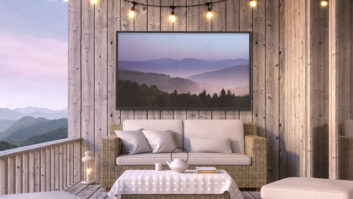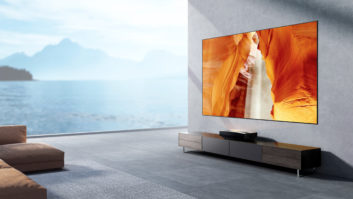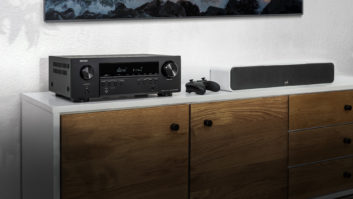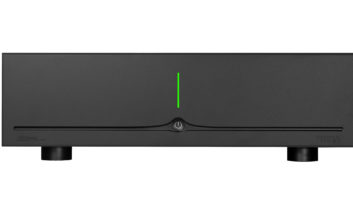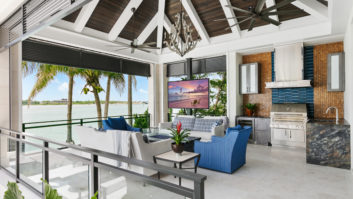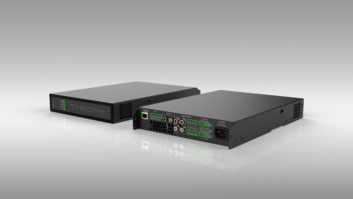Why Now Is The Right Time To Provide A High-Quality Experience
The last two decades of strong economic growth and powerful technological evolution have created entitlement among consumers; they feel that the right to own lots of technological devices defines a part of their lives. But today’s financial uncertainties have forced many consumers to prioritize between basic needs and everything else. Nonetheless, providing a high-quality experience and offering accessories will still tilt the trend in favor of specialty retailers in our business.
CONSUMER ATTITUDES
Moving at the high evolutionary—if not revolutionary— rate of the last two decades makes it difficult to look back at what has happened. Thankfully, there is always the yearly Beloit College Mindset List. This year it focuses on the college class of 2012—those students who were mostly born in 1990. As far as these young consumers are concerned, GPS navigation always have been available and Nintendo Game Boys always have provided extended hours of entertainment.
But the modern reality is that fewer customers are walking through retailers’ doors. This means that there has to be a change in mind-set to sustain business viability. Experts refer to this as an industry’s Strategic Inflexion Point. In other words, this is the time for a change in strategy.
So what does Strategic Inflexion mean to daily retailing? It simply refers to making strategic changes in how retailers go after sales.

A strategic inflection point is a time in the life of a business when its fundamentals are about to change.
To start, let’s look at how consumers behave when their wallets are full. The most obvious characteristic of this stage in national economics is that the rate of savings drops dramatically and that consumers “leverage their assets;” or in more common terms, they go out and get a second mortgage on their house or max out their credit cards in the pursuit of retail satisfaction. Yes, during good times, retailers see lots and lots of eager shoppers. In fact, the absence of this almost euphoric behavior is what has today’s stock market so worried. Our consumers already have consumed so much of the shopping Kool-Aid that the previously high levels of intoxication have resulted in a massive hangover.
CHANGING THE GAME
The game has shifted from Experience Velocity to Experience Quality, which has resulted in a great opportunity for the specialty retailer. Every single consumer encounter must be aimed at making the customer “fall-in-love”—as opposed to “fall-inlike”— with your services. Mass-merchants have made it their business to develop speedy floors, speedy retail systems, and speedy salespeople. In fact, mass-merchants often refer to highly desirable goods as “high-velocity products.” Their speedier approach has rewarded them handsomely over the recent economic expansion. But now that consumers will spend more of their time scouting the goods that they intend to purchase, the grab-and-go system so often employed by mass retailers will progressively lose its appeal. This signifies that the specialty retailer will now be left with a tremendous window of opportunity.
The first step to creating your own Strategic Inflexion is to understand that no one “needs” your services. From now on, everyone in your sales team must work very hard to provide a personalized and memorable experience, even to those consumers who do not purchase.
PROMOTE ACCESSORIES
There is no better way to display your “specialty” status than by highlighting accessories. Accessories greatly enhance a retailer’s ability to personalize every shopping experience, and displaying great service by offering accessories is something that remains an advantage of the specialty store.
Again, the trend in mass channels has been toward a reduction of slow-moving SKUs. Any product with sales below their performance metrics gets thrown out. Have you tried to buy a special kind of toothpaste at a Wal-Mart? To them, all consumers just want one of three toothpaste choices.
While this may be an over simplistic way to describe the overall system and its attitude toward personalized service, it does illustrate a trend that has served mass retailers well in the last couple of decades but that has now become a liability. Lower consumer traffic will result in lower market noise levels, which leaves the specialty retailer in a position where its voice can be heard.
Yet, many of the retailers that I have worked with feel uncomfortable selling accessories. The reason most often given is that the consumer did not walk in asking for them. They, therefore, conclude that selling accessories would be somehow unethical or even unjust. My immediate reply is in the form of a question: how angry would they be with the store salesperson who sells them a battery-operated toy for their child during the last hours before closing for the Christmas break but does not offer the needed batteries? In essence, facing a consumer who is not asking for accessories does not make it inappropriate to make the offer.
MAXIMIZE EACH CUSTOMER
To me, the math is simple. If you have fewer consumers buying opportunities, then you will have to pay a premium to try to increase revenue by bringing more customers through the doors.
Remember the oft-quoted “offer and demand” rule? With lower consumer demand, the price to get each additional consumer increases. On the other hand, if you look at your per-customer profits, then you will only have to spend more time and effort with each customer in your store. And because the cost of the time and effort (electricity, rent, employees, etc) are already paid for, your added costs would be almost zero.
In a fully staffed and operating store, the costs are exactly the same whether the consumer buys $1,000 of low-margin, mass-merchant matching goods or $1,000 of personalized, fully accessorized, and highly profitable products. Do keep in mind that revenues do nothing for your business—real profits do. So the goal of increasing sales is somewhat misguided. Your goal should be to increase profits, and for that you may do just as well by offering more of the high-profit goods.
Ask yourself the following questions: Why does Walgreens open so many stores so close together? The answer is simple. Walgreens does not focus on per-store revenue. Instead, their driving metric is per-customer profits. In other words, they plan their stores to be “low traffic” in nature. This is because they know that by placing their stores on every block, they eliminate the possibility for a competitor to locate there. This “preditorial” approach has served them so well that their only competitor, CVS, has adopted the same system. But your store does not need to be placed on every corner to create a low-traffic environment. The market has done that for you.
DELIVERING AND ENHANCING DREAMS
Consumers give salespeople lots of clues about who they are and who they would like to become during the discovery stage of the selling process. Their feedback provides an invaluable window into the kinds of things that retailers should do to convert them into satisfied customers. More often than not, customers wish to be viewed as bigger, more prestigious than they really are. So, they look for a bit of extra flash to add to their persona.
Others wish to be perceived as conservative and frugal. For these, achieving a lot more with “seemingly” less is the ticket for satisfaction. In all cases, accessories provide the right components of a story that these customers will repeat a hundred times to their friends or anyone who would listen. Like so many successful specialty retailers, your store can deliver or enhance dreams, focus on maximizing each customer, and master the art of promoting accessories. During these trying times, there is a window of opportunity that is opening for those who understand that the industry is going through a Strategic Inflexion Point and that embracing it will result in an expanded market presence. Now is the time to reassess what you have to offer and how you present your products.
Alberto Lopez is the CEO and founder of Luxicor, the parent company to American Terminal Supply and the licensee to all IXOS products in North America.


